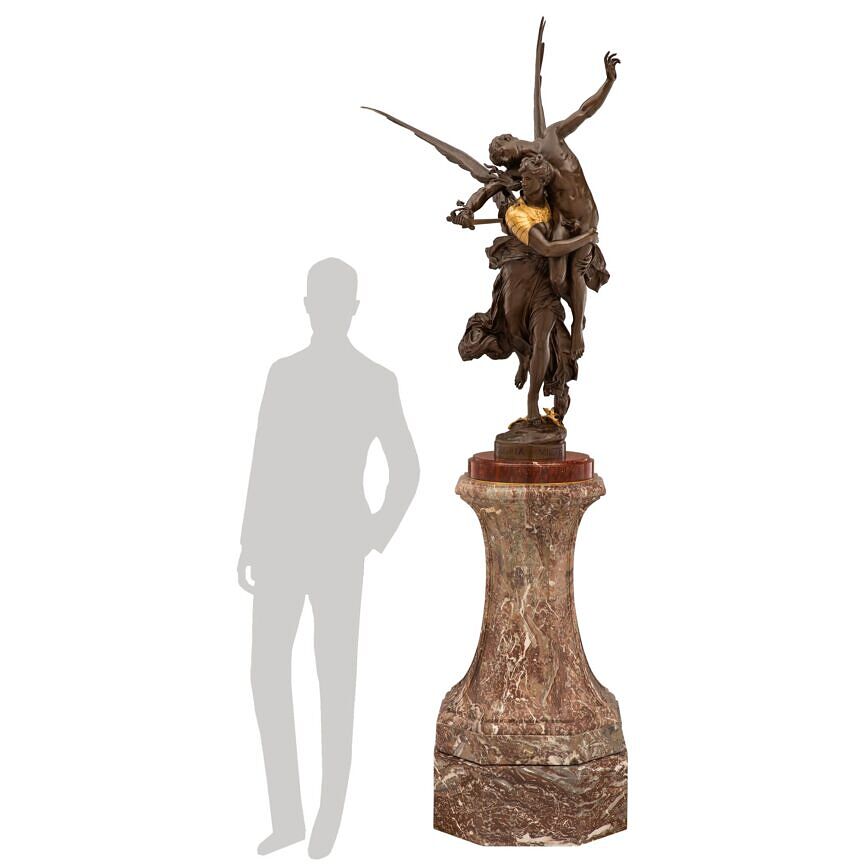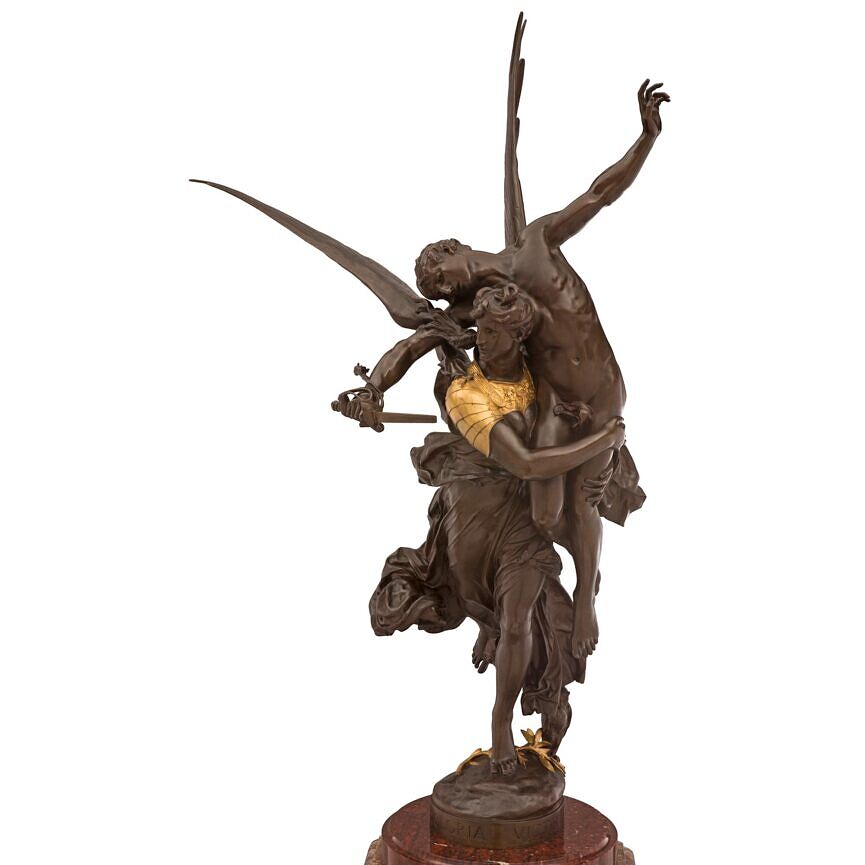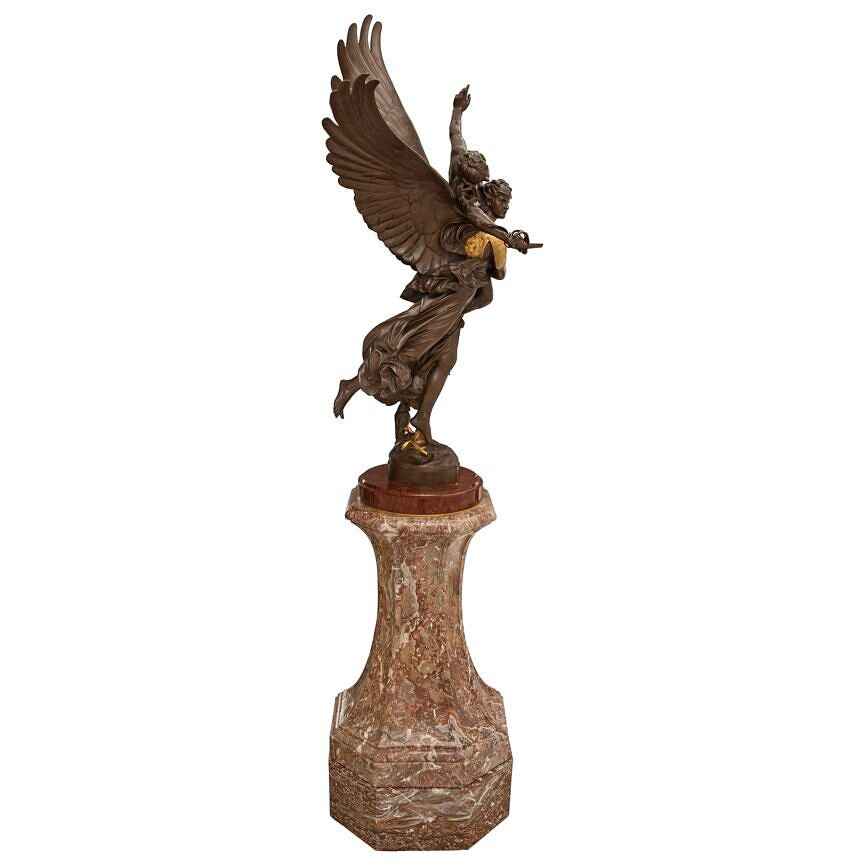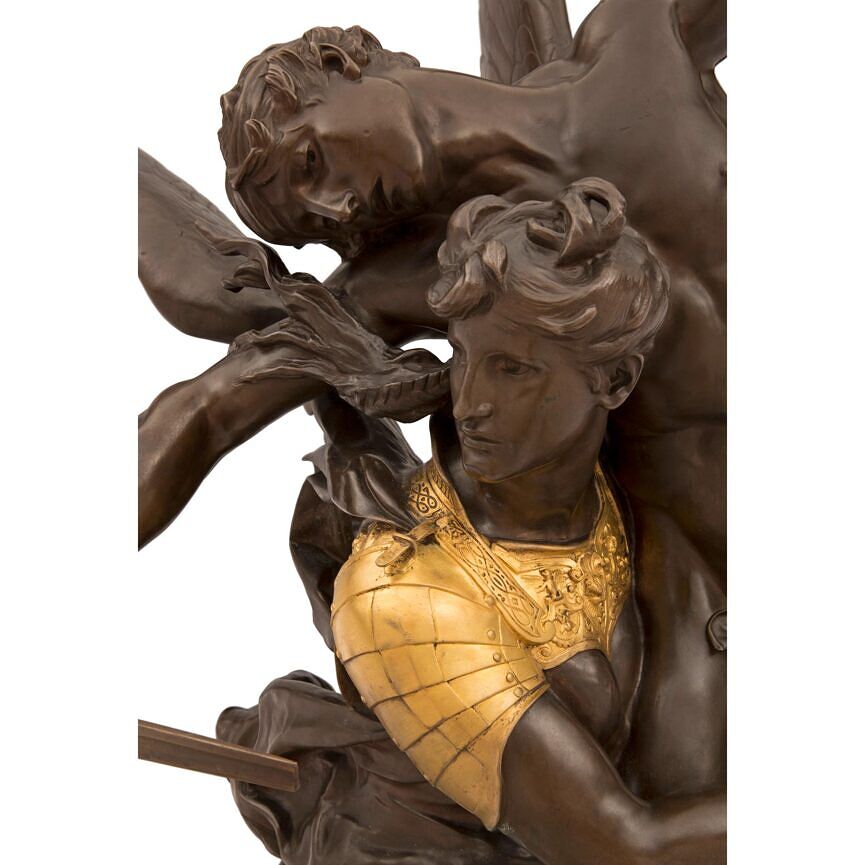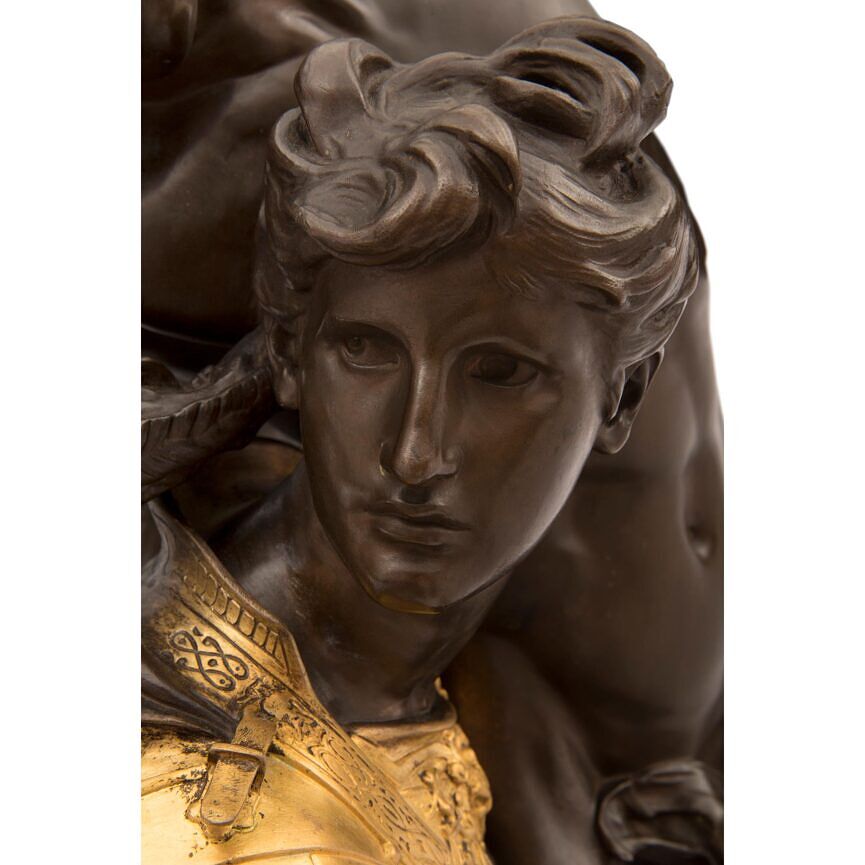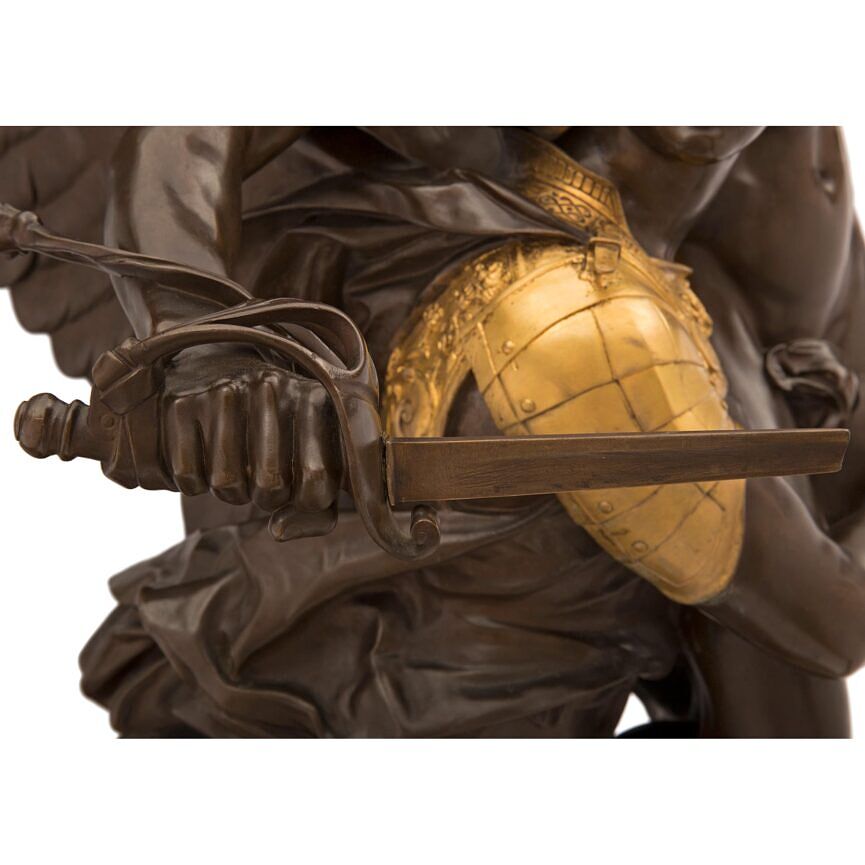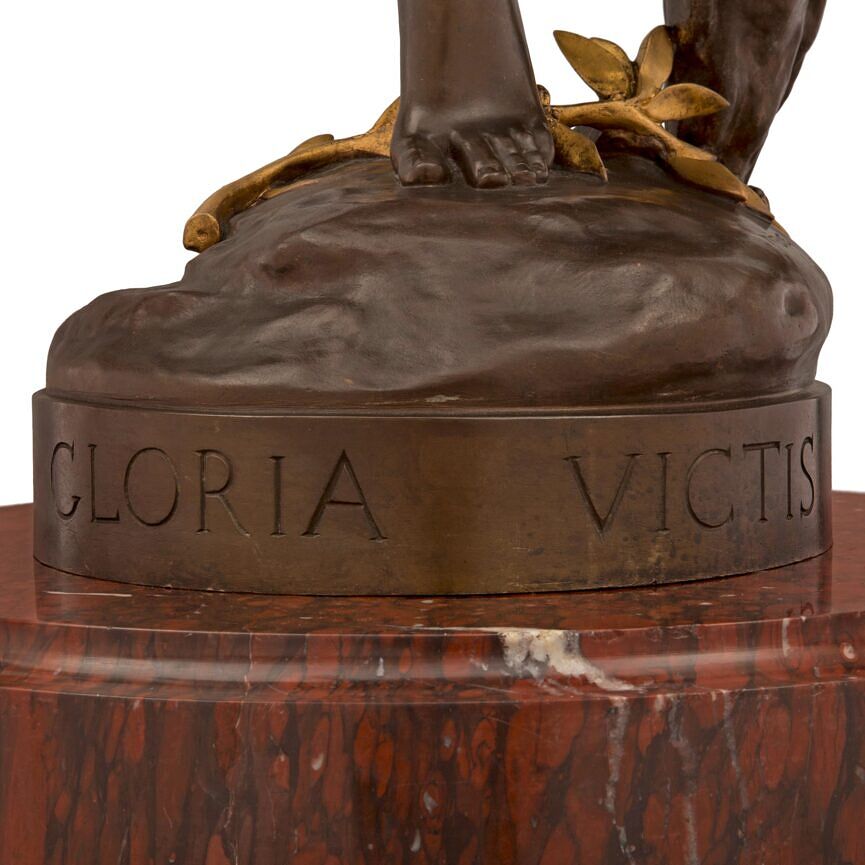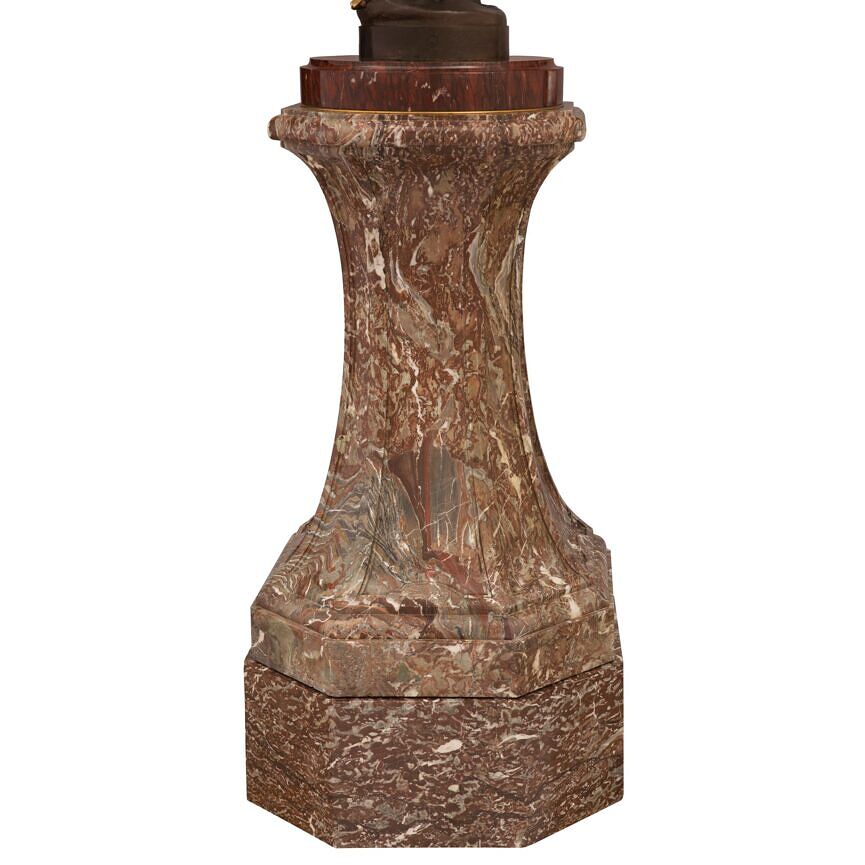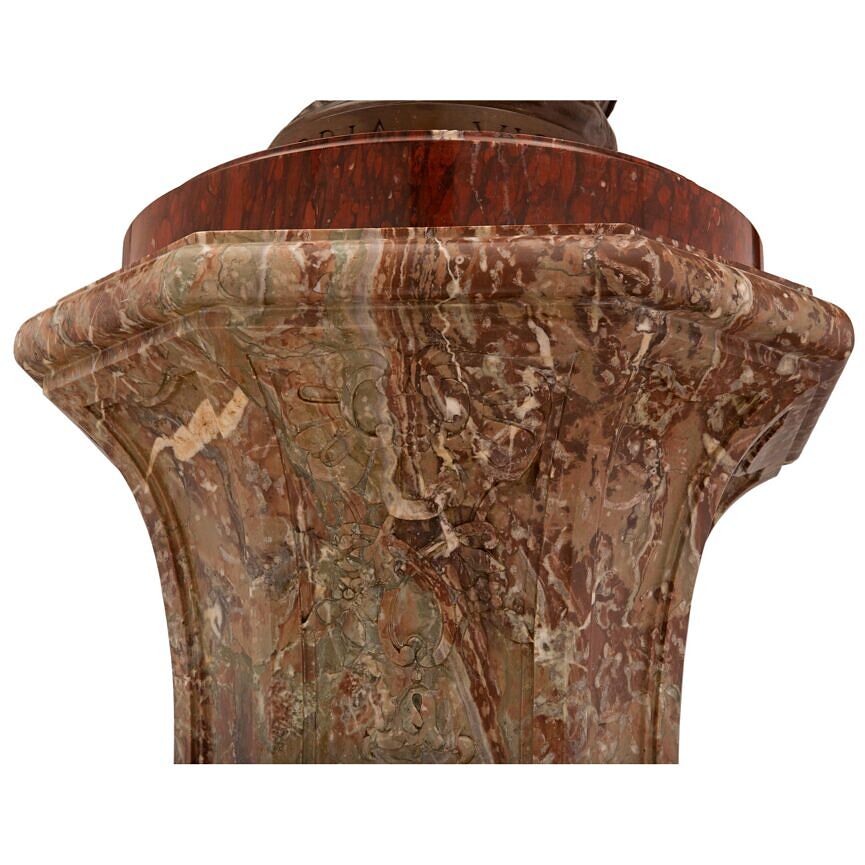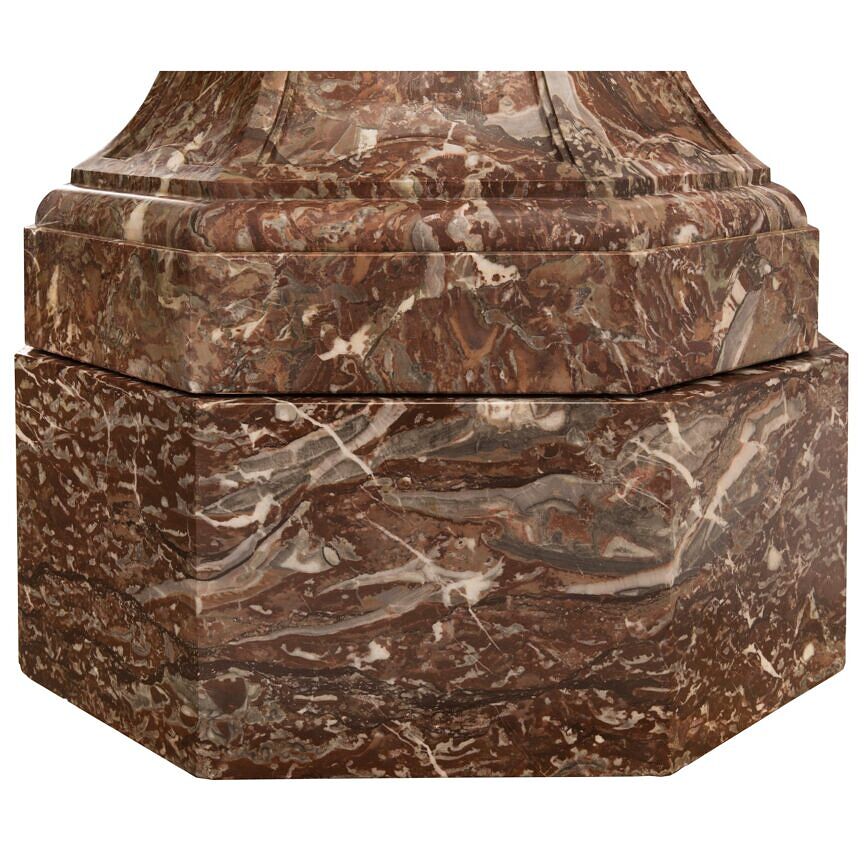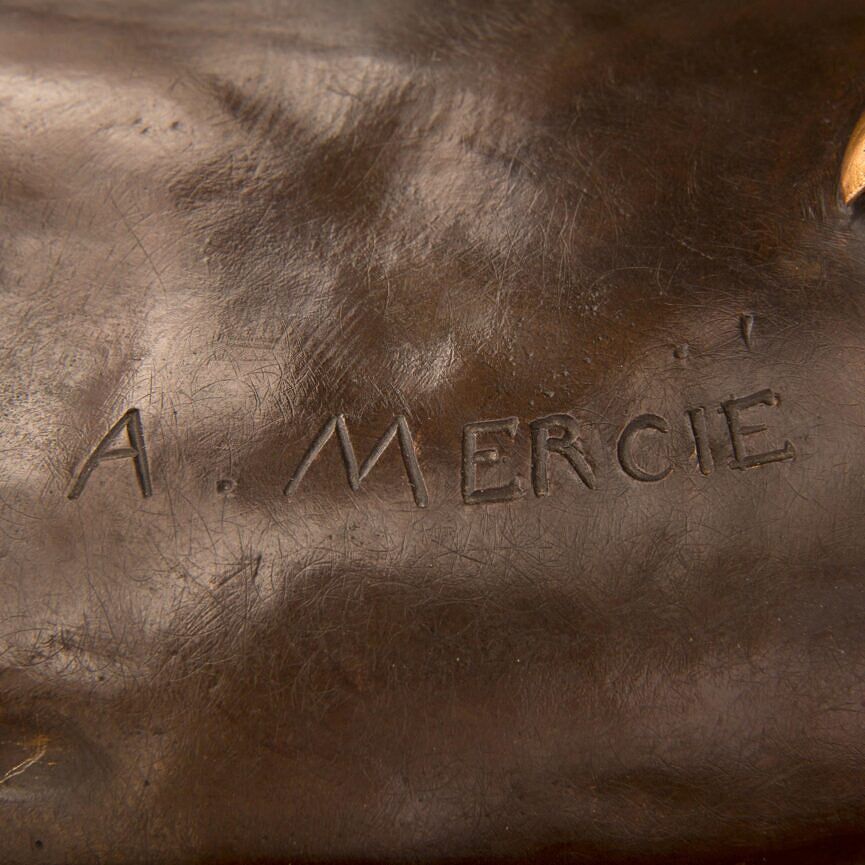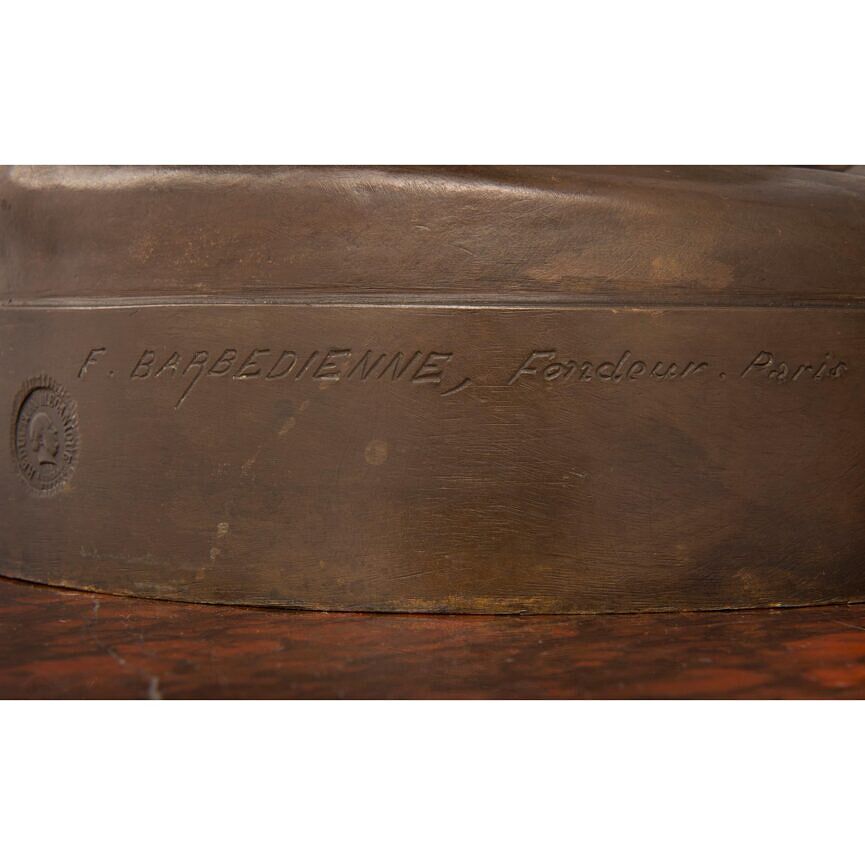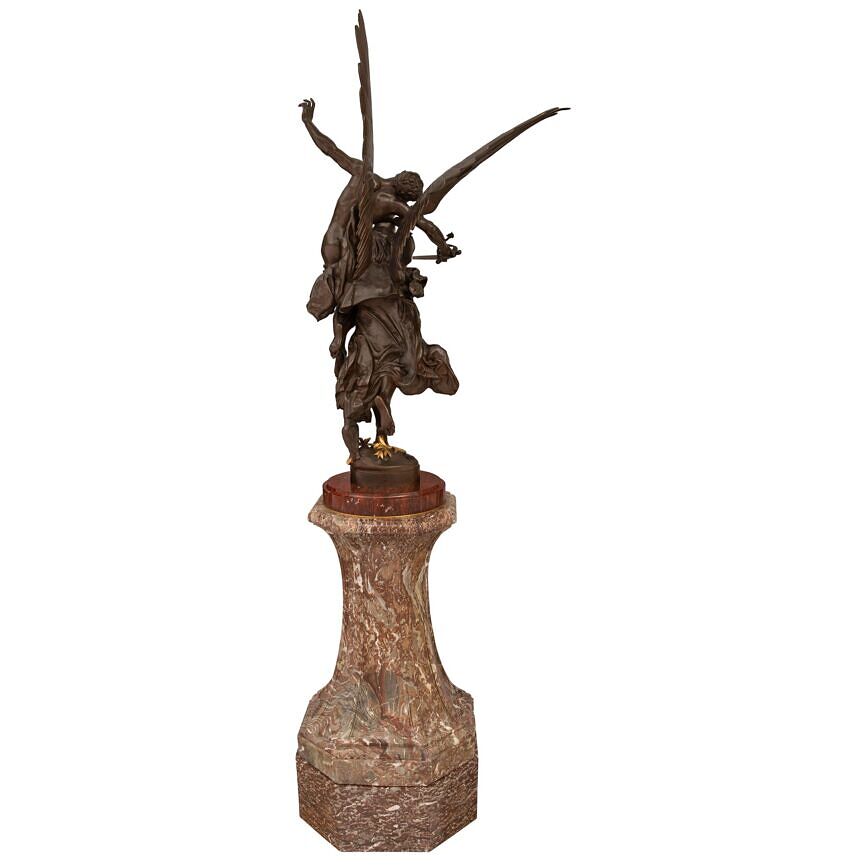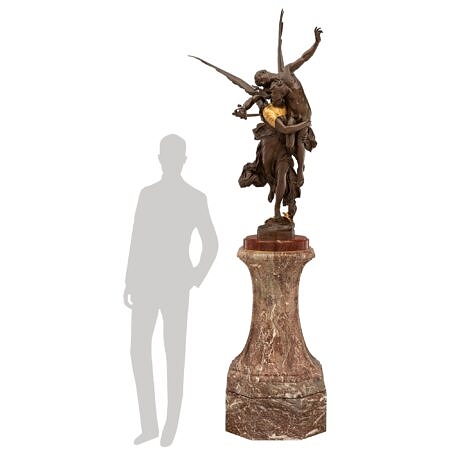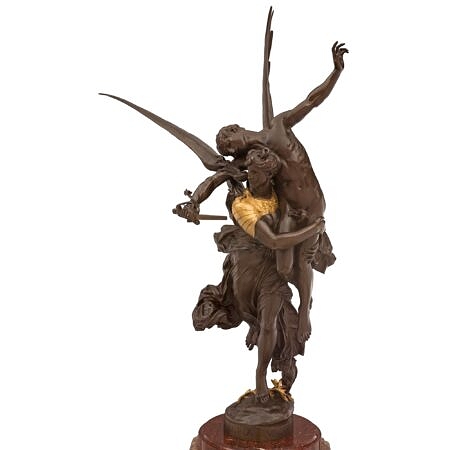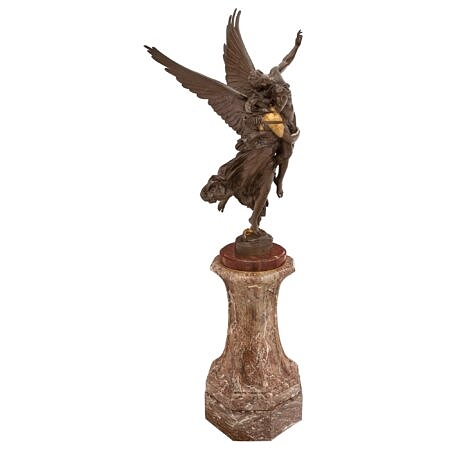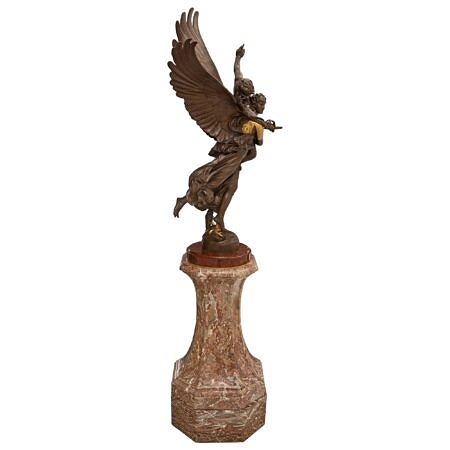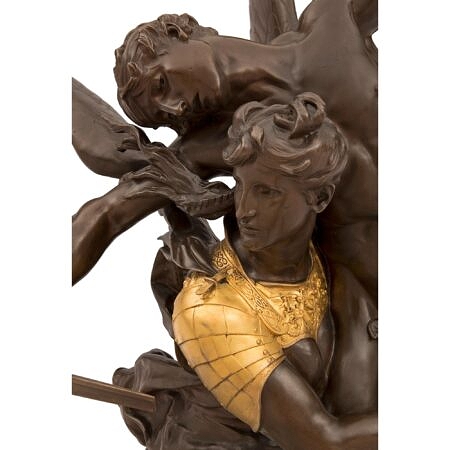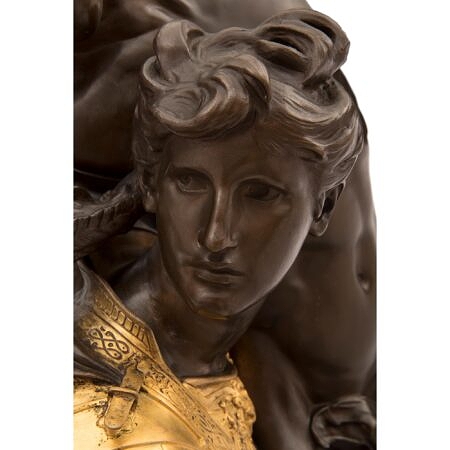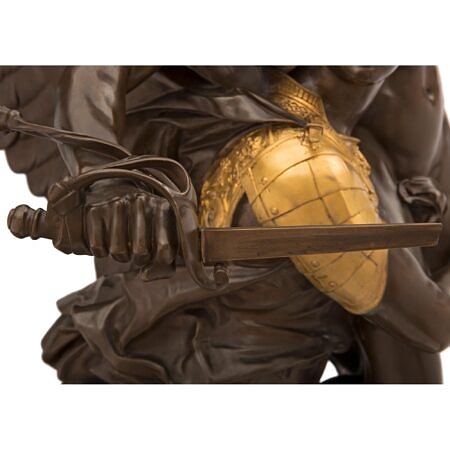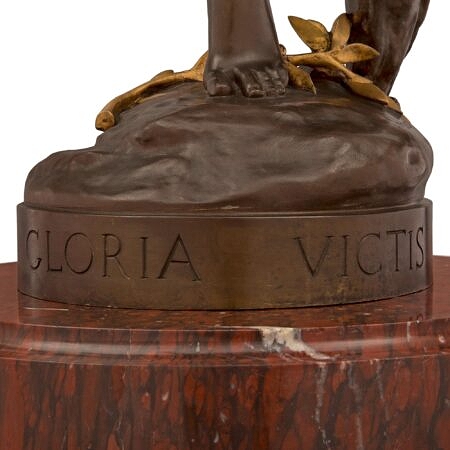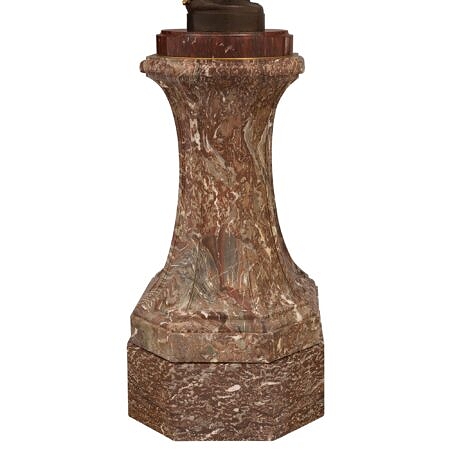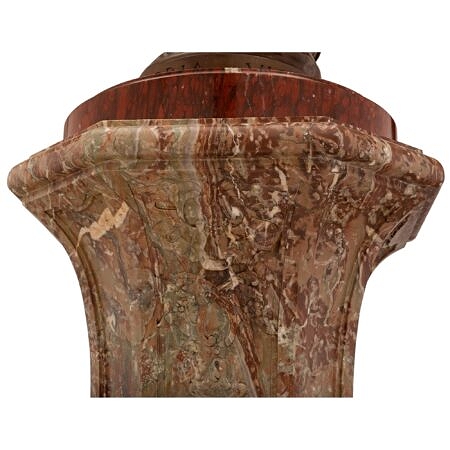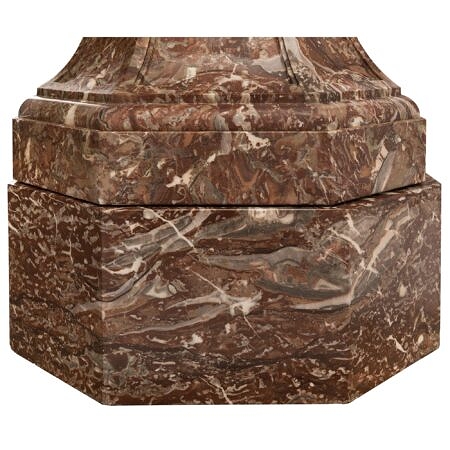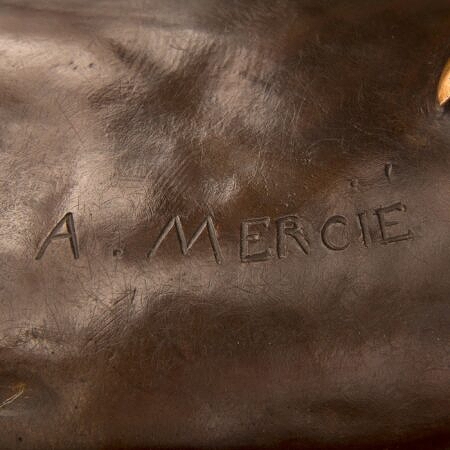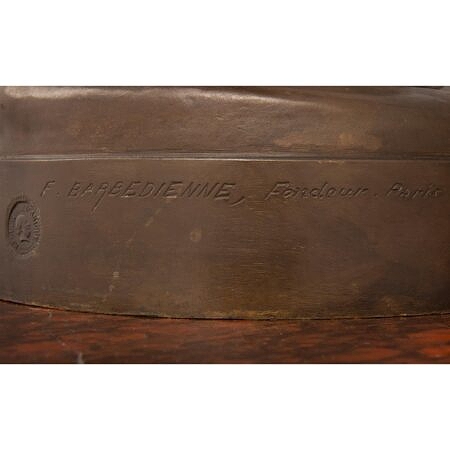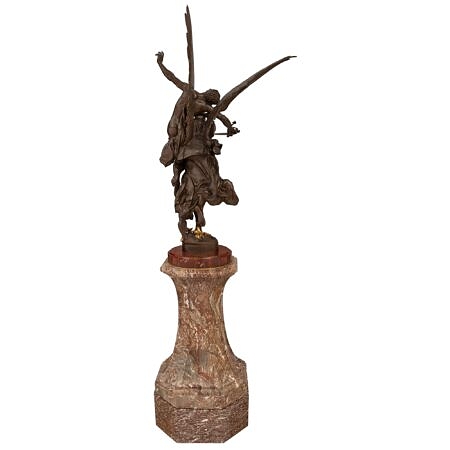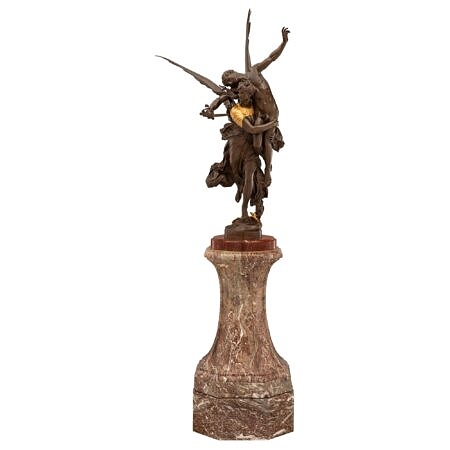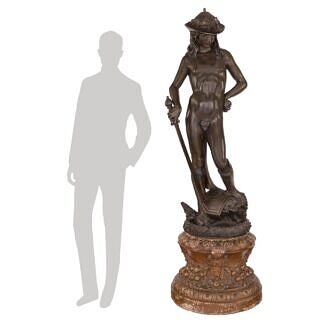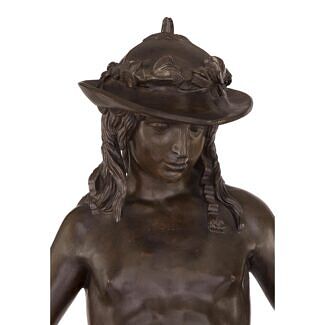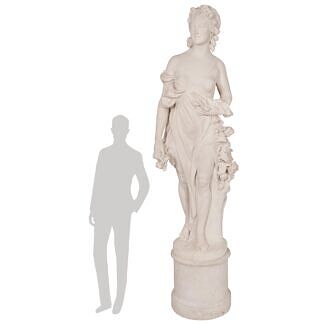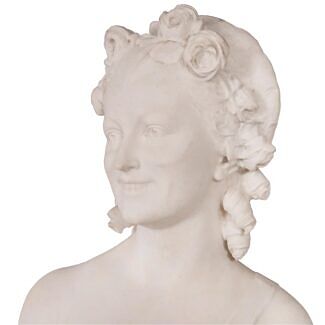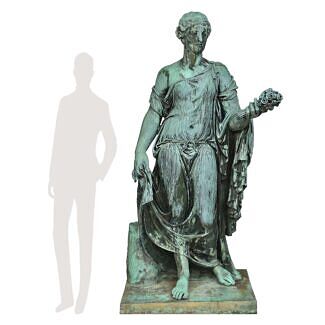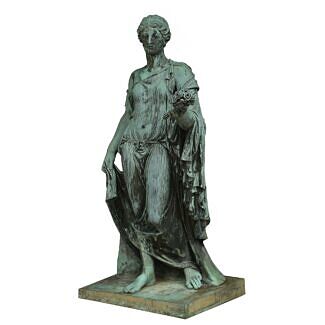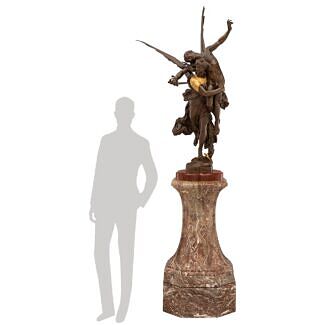A French 19th century ormolu, patinated bronze and marble statue and original pedestal named “Gloria Victus” and signed by A. Mercié and F. Barbedienne
List: $350,000.00
A stunning museum quality French 19th century Ormolu, patinated Bronze, Rouge Griotte, Coquillier de Bilbao marble statue and original pedestal named "Gloria Victus" and signed by A. Mercié and F. Barbedienne. The monumentally scaled statue is raised by its... — Read More
A stunning museum quality French 19th century Ormolu, patinated Bronze, Rouge Griotte, Coquillier de Bilbao marble statue and original pedestal named "Gloria Victus" and signed by A. Mercié and F. Barbedienne. The monumentally scaled statue is raised by its original pedestal with a hexagonal Coquillier de Bilbao base below the exceptional and most impressive lightly curved central support with an elegant mottled border, recessed designs, and finely detailed seashells at each side. The patinated bronze and ormolu statue above is raised on its original circular Rouge Griotte marble base with a mottled border and fine bottom ormolu band. The bronze depicts the famous sculpture by Antonin Mercié with different finishes located at St. André's Cathedral in Bordeaux, the Ny Carlsberg Glyptotek in Denmark, and the National Gallery or Art in Washington DC. Mercié designed this sculpture following France's defeat in the Franco-Prussian War. He intended to honor those French soldiers who had fallen in the conflict, especially his friend, the artist Henri Regnault (1843–1871). Upon France's defeat, Mercié changed the hero's head from lifted to fallen. A winged female allegorical image of Fame (or of Hope) carries to glory a dying French hero, his broken sword a sign of defeat. Mercié's original plaster sculpture won a medal at the 1874 Paris Salon.
Pedestal Base Diameter: 24.5"
— Read Less
- Item # 11916
-
H: 102 in L: 30 in D: 26.75 in
H: 259 cm L: 76 cm D: 68 cm
- France
- 19th Century
- Marble/Stone, Ormolu, Patinated Bronze
- Marius Jean Antonin Mercié Read More , Ferdinand Barbedienne Read More
Related products
-
# 10756 - H: 78" L: 23" D: 26"
-
# 5526 - H: 104" L: 31" D: 24"
-
# 5975 - H: 85" L: 52" D: 33"


